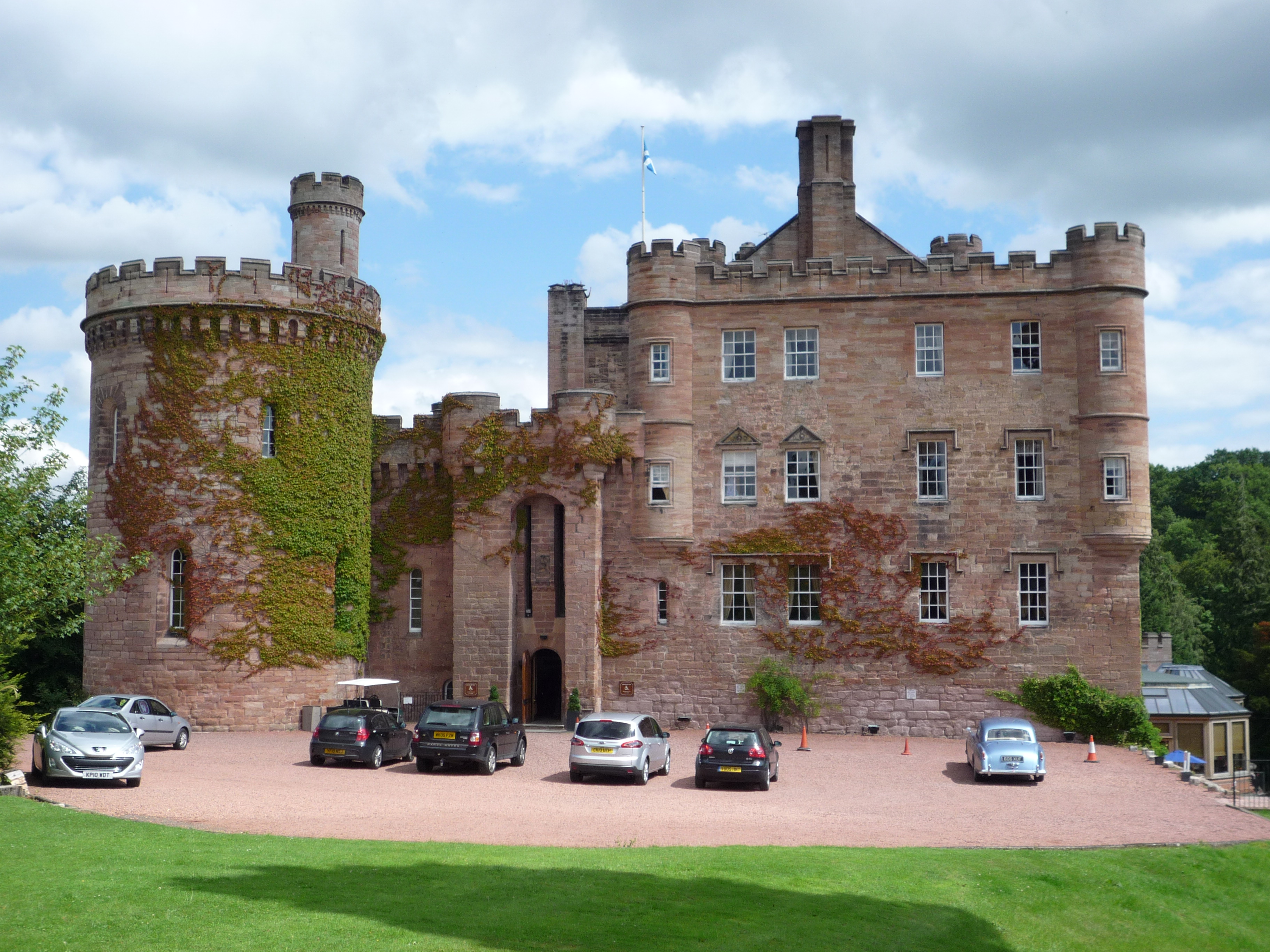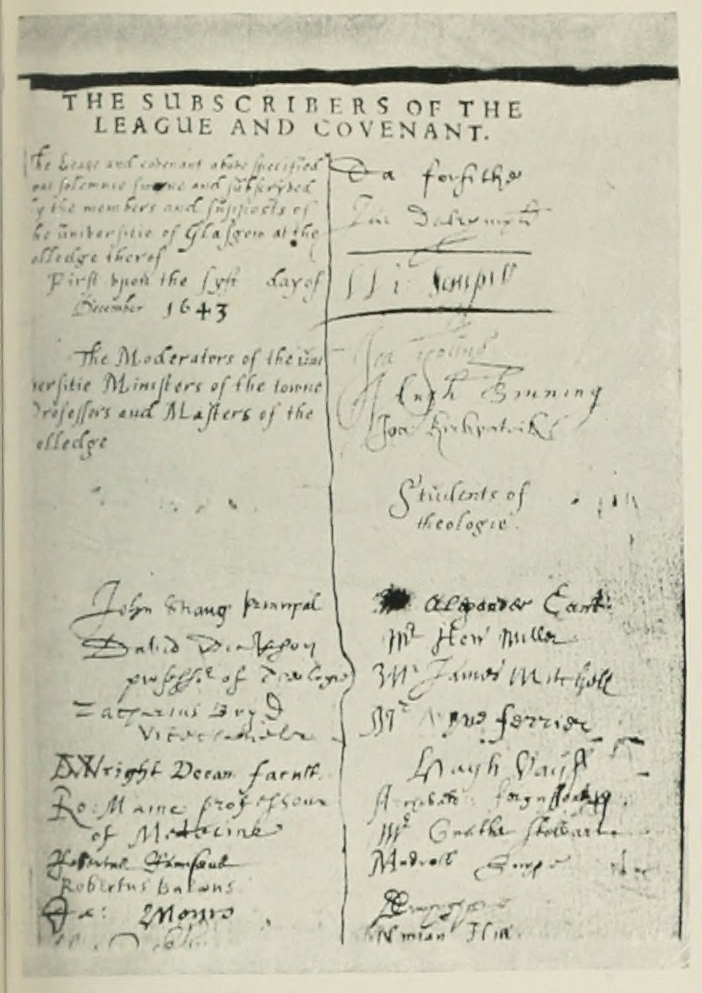|
Robert Ramsay (principal)
Robert Ramsay (1594–1651) was a minister of the Church of Scotland who served as Principal of Glasgow University. Life He was born at Dalhousie Castle south of Edinburgh the son of George Ramsay (1571-1629) and his wife Margaret Colville. He was educated at Glasgow University graduating MA in 1618. He began work as a schoolteacher in Irvine, but then from 1625 served as a Church of Scotland minister at Dundonald, South Ayrshire. In December 1640 he translated to Blackfriars Church in Glasgow. In April 1647 he moved to St Mungo's Church, Glasgow .''Fasti Ecclesiae Scoticanae''; vol. 7; by Hew Scott ; In 1648 he was elected Rector of Glasgow University and was appointed Principal on 28 August 1651 in place of John Strang (who had resigned). However, he died on 4 September of the same year, after only a few days in office. He is buried in Canongate Kirkyard in Edinburgh. Family He married twice: firstly Marion Mure of Airdhill granddaughter and heir of William Mure of ... [...More Info...] [...Related Items...] OR: [Wikipedia] [Google] [Baidu] |
Church Of Scotland
The Church of Scotland ( sco, The Kirk o Scotland; gd, Eaglais na h-Alba) is the national church in Scotland. The Church of Scotland was principally shaped by John Knox, in the Scottish Reformation, Reformation of 1560, when it split from the Catholic Church and established itself as a church in the reformed tradition. The church is Calvinist Presbyterian, having no head of faith or leadership group and believing that God invited the church's adherents to worship Jesus. The annual meeting of its general assembly is chaired by the Moderator of the General Assembly of the Church of Scotland. The Church of Scotland celebrates two sacraments, Baptism and the Lord's Supper in Reformed theology, Lord's Supper, as well as five other Rite (Christianity), rites, such as Confirmation and Christian views on marriage, Matrimony. The church adheres to the Bible and the Westminster Confession of Faith, and is a member of the World Communion of Reformed Churches. History Presbyterian tra ... [...More Info...] [...Related Items...] OR: [Wikipedia] [Google] [Baidu] |
Canongate Kirkyard
The Canongate Kirkyard ( en, Churchyard) stands around Canongate Kirk on the Royal Mile in Edinburgh, Scotland. The churchyard was used for burials from the late 1680s until the mid-20th century. The most celebrated burials at the kirkyard are the economist Adam Smith and the poet Robert Fergusson, but many other notable people were interred in the cemetery. It has been claimed that David Rizzio, the murdered private secretary of Mary, Queen of Scots, lies here, although it is highly unlikely that an Italian Catholic would be reinterred in a Protestant graveyard 120 years after his death. History The Canongate was, until the 19th century, a separate parish from Edinburgh. This separate parish was formerly served by Holyrood Abbey at the foot of the Royal Mile, and Lady Yester's Church on High School Wynd. In 1687 King James VII adopted the abbey church as a Royal Chapel, and the general population worshipped in Lady Yester's Kirk (built in 1647) until 1691. Both of these sites ... [...More Info...] [...Related Items...] OR: [Wikipedia] [Google] [Baidu] |
Principals Of The University Of Glasgow
Principal may refer to: Title or rank * Principal (academia), the chief executive of a university ** Principal (education), the office holder/ or boss in any school * Principal (civil service) or principal officer, the senior management level in the UK Civil Service * Principal dancer, the top rank in ballet * Principal (music), the top rank in an orchestra Law * Principal (commercial law), the person who authorizes an agent ** Principal (architecture), licensed professional(s) with ownership of the firm * Principal (criminal law), the primary actor in a criminal offense * Principal (Catholic Church), an honorific used in the See of Lisbon Places * Principal, Cape Verde, a village * Principal, Ecuador, a parish Media * ''The Principal'' (TV series), a 2015 Australian drama series * ''The Principal'', a 1987 action film * Principal (music), the lead musician in a section of an orchestra * Principal photography, the first phase of movie production * "The Principal", a song on ... [...More Info...] [...Related Items...] OR: [Wikipedia] [Google] [Baidu] |
1651 Deaths
Events January–March * January 1 – Charles II is crowned King of Scots at Scone ( his first crowning). * January 24 – Parliament of Boroa in Chile: Spanish and Mapuche authorities meet at Boroa, renewing the fragile peace established at the parliaments of Quillín, in 1641 and 1647. * February 22 – St. Peter's Flood: A first storm tide in the North Sea strikes the coast of Germany, drowning thousands. The island of Juist is split in half, and the western half of Buise is probably washed away. * March 4 – St. Peter's Flood: Another storm tide in the North Sea strikes the Netherlands, flooding Amsterdam. * March 6 – The town of Kajaani was founded by Count Per Brahe the Younger. * March 15 – Prince Aisin Gioro Fulin attains the age of 13 and becomes the Shunzhi Emperor of China, which had been governed by a regency since the death of his father Hong Taiji in 1643. * March 26 – The Spanish ship ''San José'', loaded wi ... [...More Info...] [...Related Items...] OR: [Wikipedia] [Google] [Baidu] |
1594 Births
Events January–June * March 21 – Henry IV enters his capital of Paris for the first time. * April 17 – Hyacinth of Poland is canonized. * May ** Uprising in Banat of Serbs against Ottoman rule ends with the public burning of Saint Sava's bones in Belgrade, Serbia. ** Nine Years' War (Ireland): Hugh O'Neill, 2nd Earl of Tyrone and Hugh Roe O'Donnell form an alliance to try to overthrow English domination. * June 5 – Willem Barents makes his first voyage to the Arctic Ocean, in search of the Northeast Passage. * June 11 – Philip II of Spain recognizes the rights and privileges of the local nobles and chieftains in the Philippines, which paves the way for the stabilization of the rule of the Principalía. * June 22– 23 – Anglo-Spanish War: Action of Faial – In the Azores, an English attempt to capture the large Portuguese carrack ''Cinco Chagas'', reputedly one of the richest ever to set sail from the East Indies, causes ... [...More Info...] [...Related Items...] OR: [Wikipedia] [Google] [Baidu] |
Linlithgow
Linlithgow (; gd, Gleann Iucha, sco, Lithgae) is a town in West Lothian, Scotland. It was historically West Lothian's county town, reflected in the county's historical name of Linlithgowshire. An ancient town, it lies in the Central Belt on an historic route between Edinburgh and Falkirk beside Linlithgow Loch. The town is situated approximately 20 miles (32 km) west of Edinburgh. During the medieval period, the town grew in prominence as a royal burgh and residence around Linlithgow Palace. In later centuries, Linlithgow became a centre of industry in leather making and other materials, before developing rapidly in the Victorian era with the opening of the Union Canal in the 1820s and the arrival of the railway in 1842. Linlithgow was the former county town of the county but the Council now resides in nearby Livingston. Today Linlithgow has less industry and the economy of the town centre is focused on hospitality, heritage and tourism services. Linlithgow's patron saint is ... [...More Info...] [...Related Items...] OR: [Wikipedia] [Google] [Baidu] |
Bishop Of Dunblane
The Bishop of Dunblane or Bishop of Strathearn was the ecclesiastical head of the Diocese of Dunblane or Strathearn, one of medieval Scotland's thirteen bishoprics. It was based at Dunblane Cathedral, now a parish church of the Church of Scotland. The bishopric itself certainly derives from an older Gaels, Gaelic Christian community. According to legend, the Christian community of Dunblane was derived from the mission of Saint Blane, St. Bláán, a saint originally associated with the monastery of Cenn Garath (Kingarth) on the Isle of Bute. Although the bishopric had its origins in the 1150s or before, the cathedral was not built nor was the seat (''cathedra'') of the diocese fixed at Dunblane until the episcopate of Clement of Dunblane, Clement. The Bishopric's links with Rome ceased to exist after the Scottish Reformation, but continued, saving temporary abolition between 1638 and 1661, under the episcopal Church of Scotland until the Revolution of 1688. Episcopacy in the establ ... [...More Info...] [...Related Items...] OR: [Wikipedia] [Google] [Baidu] |
James Ramsay (bishop)
James Ramsay (c.1624–1696), bishop of Dunblane, bishop of Ross, was son of Robert Ramsay (1598?–1651). The latter was successively minister of Dundonald (1625–40), of Blackfriars or College Church, Glasgow (1640–7), and of the High Church (now the cathedral), Glasgow (1647–51); was dean of the faculty of the University of Glasgow 1646 and 1650–1, rector in 1648, and principal from 28 August 1651 until his death in the following September. He is buried in Canongate Churchyard. His grave is officially "lost" but the ornate, illegible stone on the east side of the church, now somewhat spuriously ascribed to Rizzio is probably his. Biography Early career Born in Irvine, North Ayrshire, in 1624, James was the son of Rev Robert Ramsay a schoolteacher there, by his second wife, Janet Campbell. In 1625 the family moved to Dundonald, South Ayrshire when his father became minister of that parish. In 1640 they moved to Glasgow when his father became minister of Blackfriars ... [...More Info...] [...Related Items...] OR: [Wikipedia] [Google] [Baidu] |
John Strang
John Strang (1584–1654) was a Scottish minister and Principal of Glasgow University. He was a signator to the National Covenant of 1638. Life He was born at Irvine, Ayrshire in 1584. His father, William Strang (1547–1588), minister of Irvine, belonged to the family of Strang of Balcaskie in Fife; and his mother Agnes was sister of Alexander Borthwick, 'portioner' of Nether Lenagher, Midlothian. On William's death in 1588, his mother married Rev Robert Wilkie (d. 1601), minister of Kilmarnock, and young Strang received his early education at the grammar school there, Zachary Boyd being one of his schoolfellows. About the age of twelve he was sent to the University of St. Andrews, and placed under the care of Principal Robert Wilkie, a relative of his stepfather. He graduated M.A. four years afterwards, and subsequently became one of the regents of St. Leonard's College. He was licensed to preach as a Church of Scotland minister by the Presbytery of St Andrews and in April ... [...More Info...] [...Related Items...] OR: [Wikipedia] [Google] [Baidu] |
Glasgow University
, image = UofG Coat of Arms.png , image_size = 150px , caption = Coat of arms Flag , latin_name = Universitas Glasguensis , motto = la, Via, Veritas, Vita , mottoeng = The Way, The Truth, The Life , established = , type = Public research universityAncient university , endowment = £225.2 million , budget = £809.4 million , rector = Rita Rae, Lady Rae , chancellor = Dame Katherine Grainger , principal = Sir Anton Muscatelli , academic_staff = 4,680 (2020) , administrative_staff = 4,003 , students = () , undergrad = () , postgrad = () , city = Glasgow , country = Scotland, UK , colours = , website = , logo ... [...More Info...] [...Related Items...] OR: [Wikipedia] [Google] [Baidu] |




.jpg)


